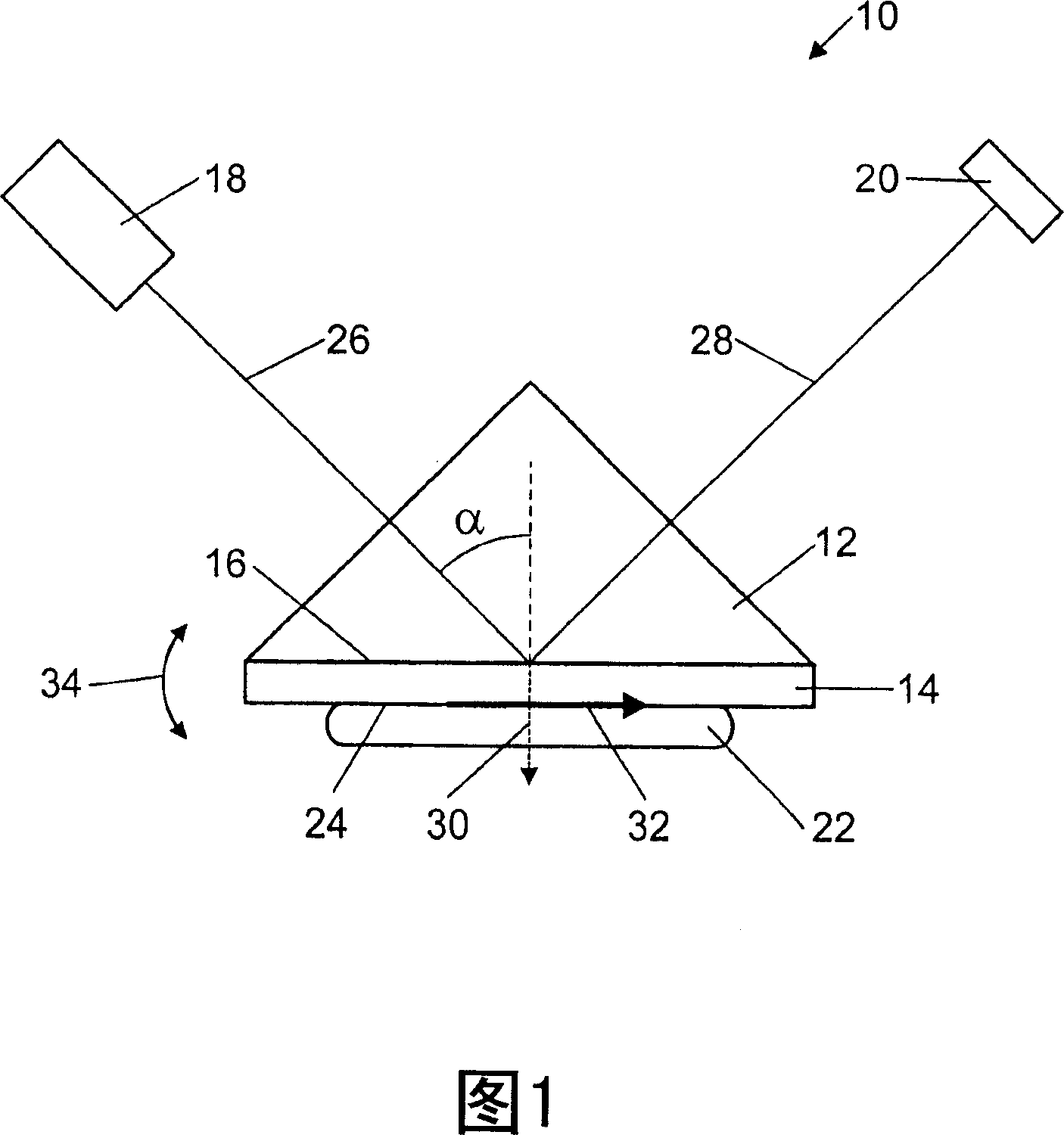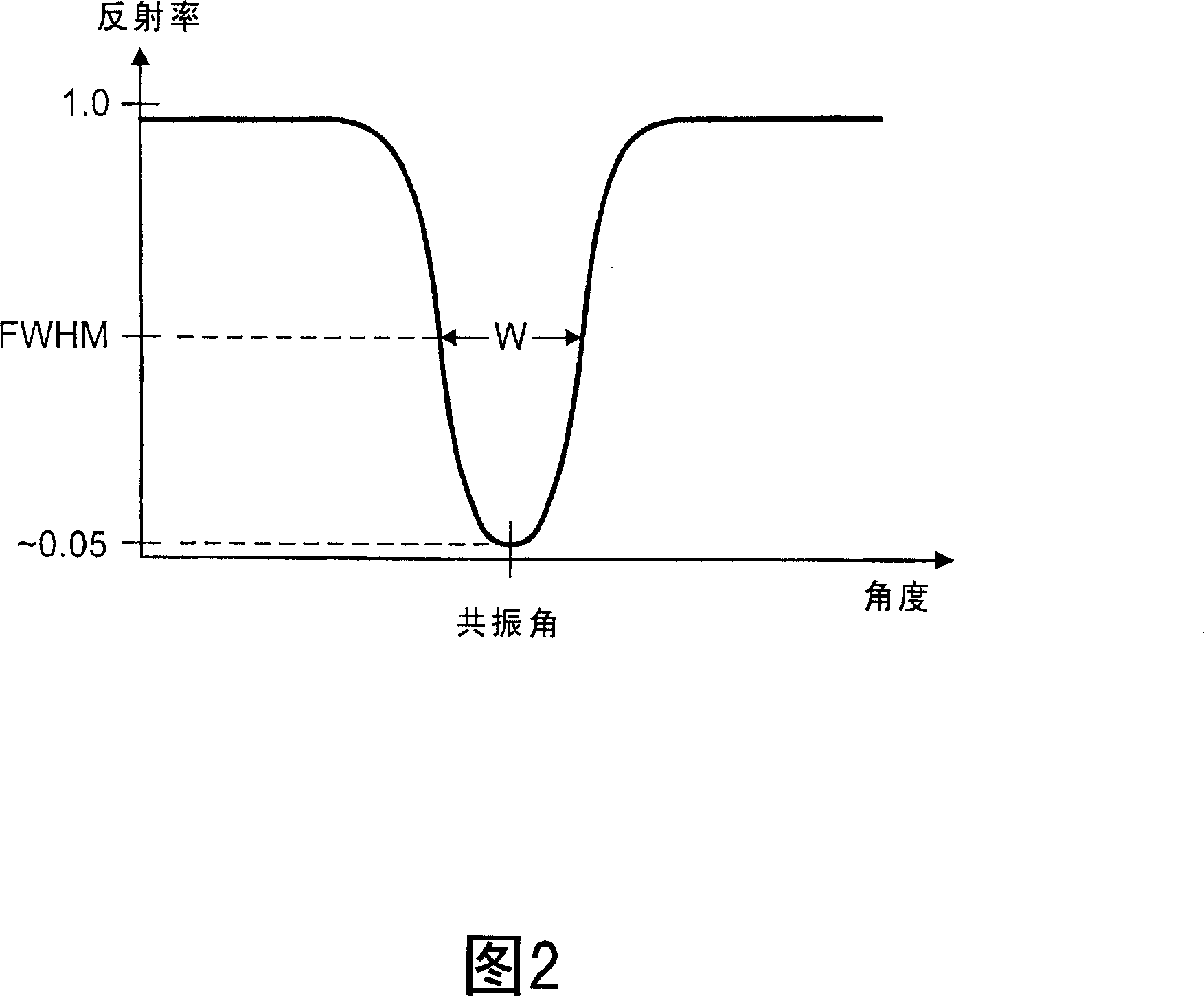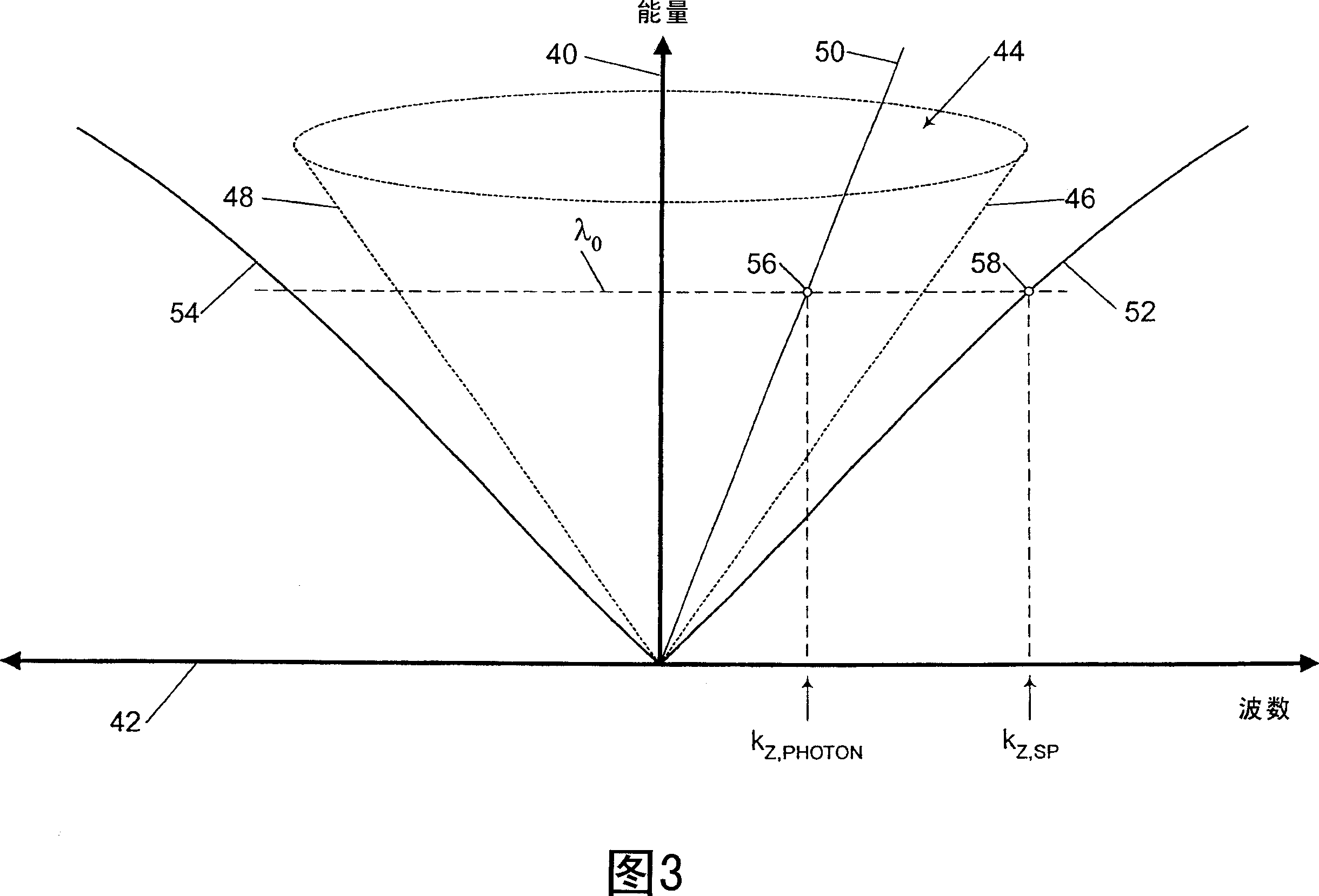Surface plasmon resonance biosensor using coupled surface plasmons
A surface plasmon and conductive layer technology, applied in biological testing, instruments, scientific instruments, etc., can solve problems such as the decrease of the reflectivity of the conductive layer
- Summary
- Abstract
- Description
- Claims
- Application Information
AI Technical Summary
Problems solved by technology
Method used
Image
Examples
Embodiment Construction
[0016] Reference will now be made in detail to embodiments according to the present invention, examples of which are illustrated in the accompanying drawings, wherein like numerals refer to like elements throughout. Embodiments according to the present invention are described below.
[0017] FIG. 1 shows a surface plasmon resonance biosensor 10 according to the invention comprising a prism 12 , a conductive layer 14 contacting one face 16 of the prism 12 , a light source 18 and a detector 20 . Sample 22 contacts conductive layer 14 and forms conductive layer / sample interface 24 . The light source 18 emits a collimated monochromatic incident light beam 26 having a wavelength λ0. The light source 18 may eg be a laser. An incident light beam 26 enters the prism 12 and is incident on the face 16 of the prism 12 contacting the conductive layer 14 at an angle of incidence α, which is then reflected and forms a reflected light beam 28 which is detected by the detector 20 .
[0018...
PUM
| Property | Measurement | Unit |
|---|---|---|
| thickness | aaaaa | aaaaa |
| thickness | aaaaa | aaaaa |
| reflectance | aaaaa | aaaaa |
Abstract
Description
Claims
Application Information
 Login to View More
Login to View More - R&D
- Intellectual Property
- Life Sciences
- Materials
- Tech Scout
- Unparalleled Data Quality
- Higher Quality Content
- 60% Fewer Hallucinations
Browse by: Latest US Patents, China's latest patents, Technical Efficacy Thesaurus, Application Domain, Technology Topic, Popular Technical Reports.
© 2025 PatSnap. All rights reserved.Legal|Privacy policy|Modern Slavery Act Transparency Statement|Sitemap|About US| Contact US: help@patsnap.com



